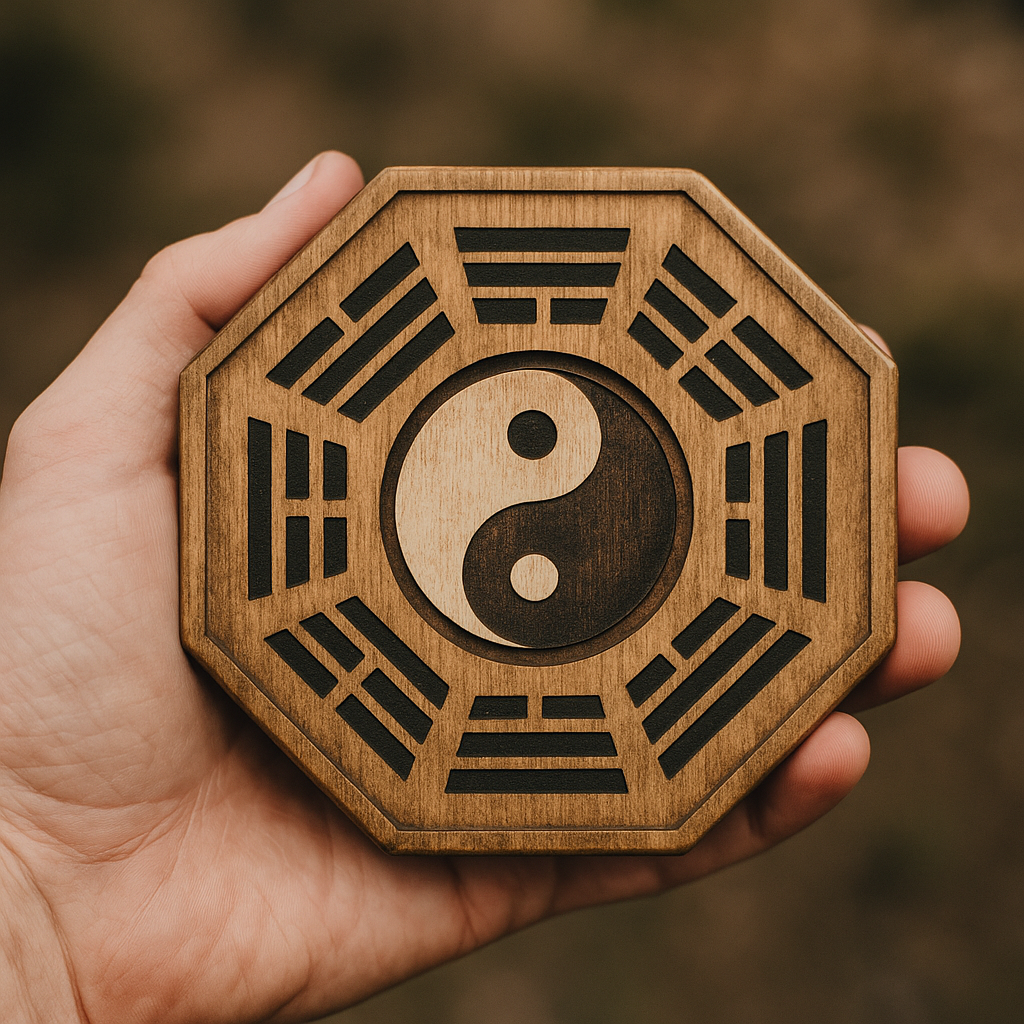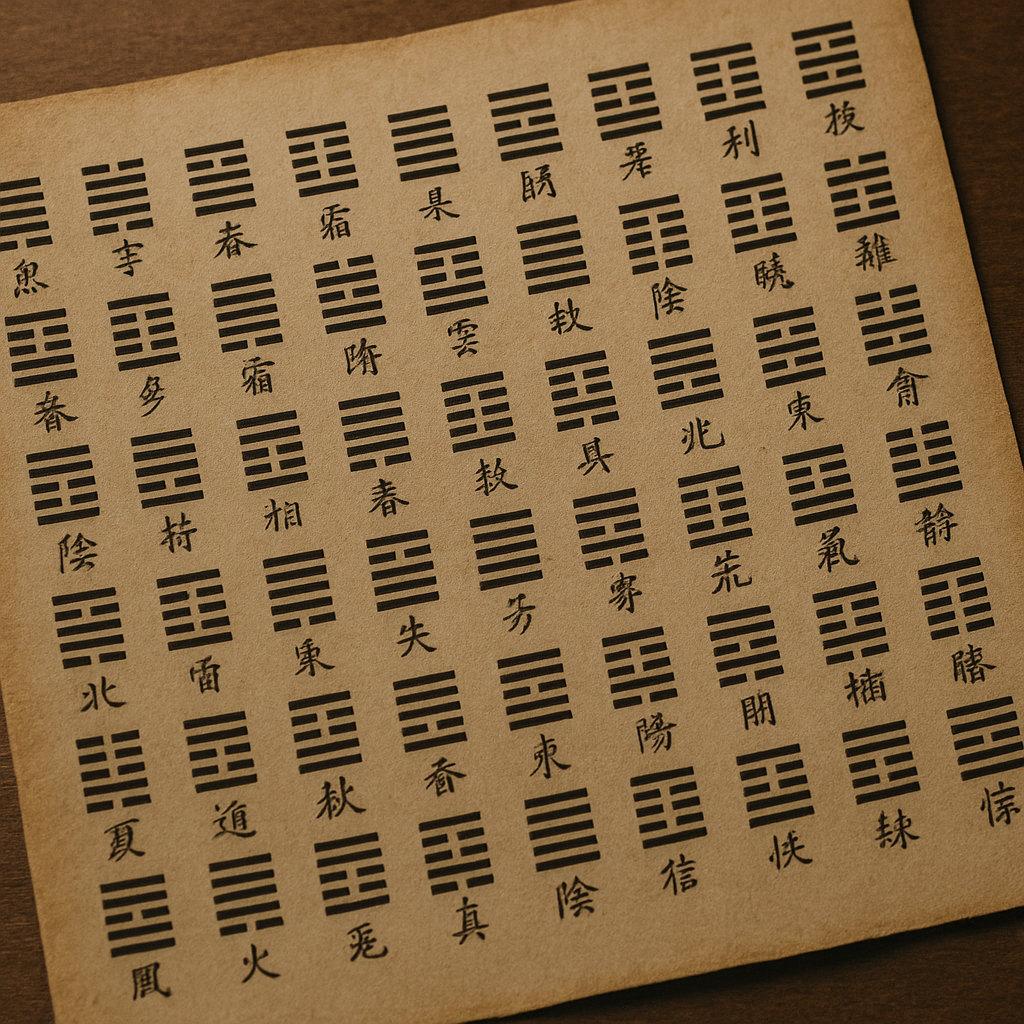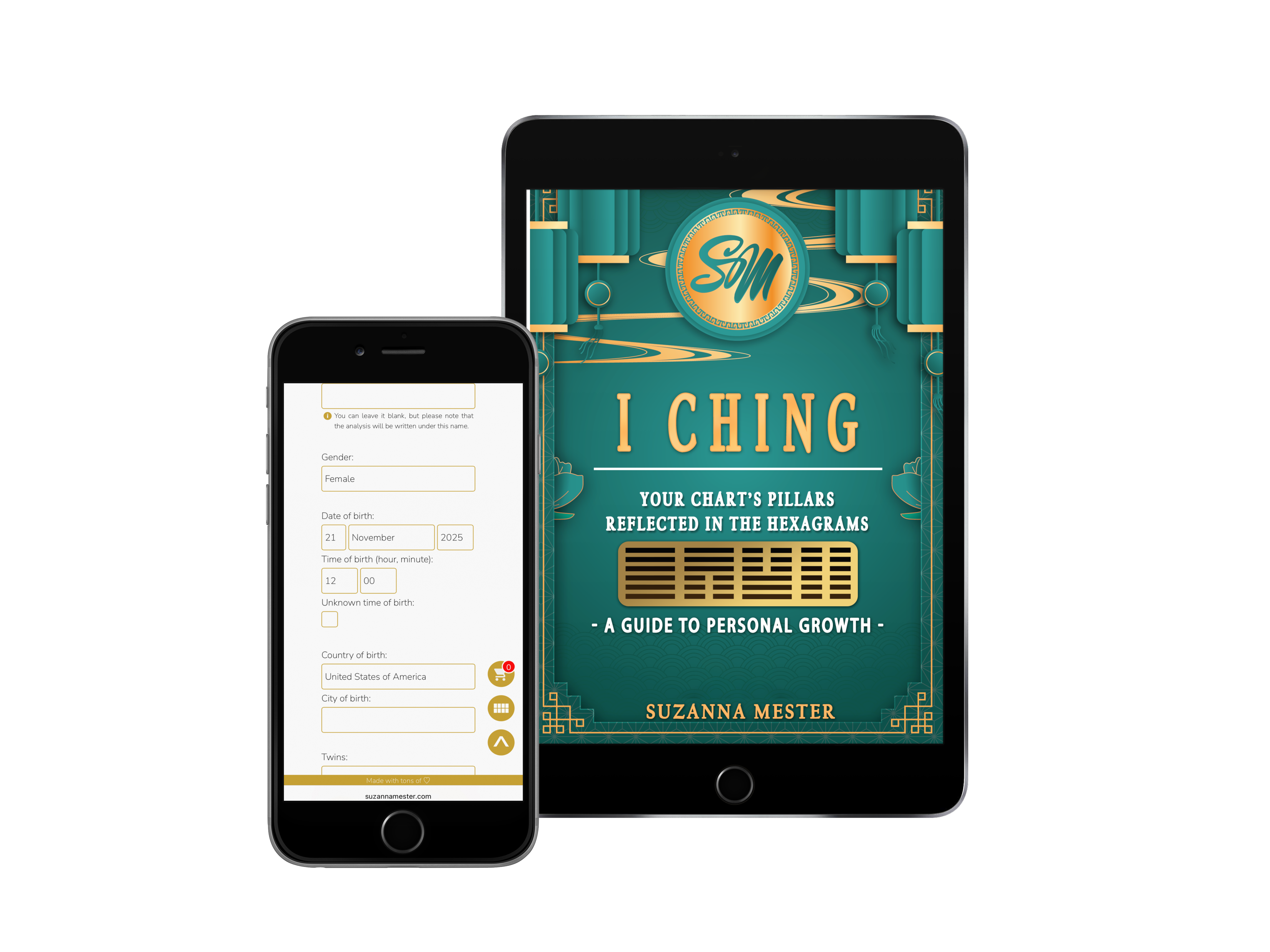There is a book that does not store words, but the directions of change. A book in which the motions of the world can be described in six lines. This is the I Ching – The Book of Changes.
Did you know that the I Ching, the Book of Changes, is over 3,000 years old, making it one of the most widely read books in the world after the Bible?
The I Ching preserves ancient wisdom. Chinese philosophers studied the patterns of nature, human destiny, and the consequences of decisions through the hexagrams. Originally, they used turtle shells and animal bones as divination tools, heating them with fire and interpreting the shapes that appeared as messages from the divine. Later, they organized these patterns into broken and solid lines, which led to the concept of Yin and Yang, recognizing the duality of nature. From this, the eight trigrams emerged:
Heaven, Earth, Water, Fire, Thunder, Wind, Mountain, Lake, which also became the foundation of Feng Shui.

These symbols represented basic natural qualities and archetypes. By combining the eight trigrams in pairs, 64 patterns were formed, which became the I Ching, the Book of Changes. Each hexagram reflects a specific life situation, energy, or stage of personal growth in the present moment.
 The birth of Hexagrams: The movements of the world and the individual in six lines
The birth of Hexagrams: The movements of the world and the individual in six lines
Chinese sages observed the cycles of nature, light and shadow, growth and withdrawal, spring and winter. These cycles were symbolized by Yin and Yang, two opposing yet complementary forces. When six of these alternating lines were stacked together, a hexagram was born, a snapshot of change in a single moment.
Self-Knowledge in the 20th century: When ancient wisdom became psychology
In the 1900s, the I Ching took on a new dimension.
Carl Gustav Jung, the father of psychology, saw the I Ching as a map of the unconscious. He realized that hexagrams reflect the patterns of the psyche, the unconscious forces shaping an individual’s present reality.
This marked a shift in how the Western world approached the Book of Changes. Psychology, self-development movements, and spiritual practices all found their own language within it.
By the end of the 20th century, the I Ching became a bridge between East and West, integrating symbolic thinking, unconscious dynamics, and the archetypes of human destiny. This foundation was later expanded by
Human Design and the
Gene Keys system.
The modern gateway of Chinese Astrology: When Hexagrams speak through your birth chart
In Chinese astrology, particularly the Four Pillars of Destiny (Bazi), a person’s birth time and major life areas are organized into four pillars: year, month, day, and hour. Each pillar has two layers: a “Heavenly Stem” and an “Earthly Branch,” reflecting the dynamics of Yin-Yang and the five elements.
The Pieces of the puzzle come together
After years of study and practice, I was finally able to match the four pillars of Chinese astrology with the hexagrams. This created a clear and understandable system where each element, pillar, or luck cycle shows a part of the bigger picture, your personal growth journey.
In the summer of 2025, I compared my own chart’s pillars with the corresponding I Ching hexagrams. I realized that if this had such a strong effect on me, it could also guide the charts of my friends and loved ones. And it worked, every hexagram resonated powerfully. It was like a puzzle coming together. Going through all the hexagrams felt like a personal initiation, and I could feel their consciousness-raising impact firsthand. By the end of the summer, I had integrated this method into my consultations, and it was incredibly accurate. People confirmed how helpful this system was for understanding themselves.
Matching hexagrams to Chinese astrology pillars revolutionizes self-knowledge! Each birth pillar can correspond to a hexagram, showing the learning direction in your life. It highlights where you are experiencing change, in relationships, career, or your inner journey, and shows what to embrace and what to release for growth.
The I Ching hexagrams come alive within your Four Pillars chart, revealing your next steps. It doesn’t generalize, it shows exactly what you need to evolve. And the beautiful part is seeing the high levels of awareness your friends can live through even a single pillar.
This is exactly the goal of the new I Ching e-book series:
To connect ancient Chinese systems with practical tools for modern self-knowledge. The teachings of Richard Rudd’s Gene Keys, symbolism, and Human Design all helped me form a complete picture from your chart.
What you get from the new I Ching e-book:
🔹Clear guidance on the direction of your personal growth
🔹Contemplative questions for every topic to deepen awareness
🔹Understanding that every event has its place and meaning
🔹Seeing change not as something to fear but as an invitation to grow
🔹Discovering the six lines and six developmental stages of each hexagram
🔹Option to explore the hexagrams of your friends, family, or loved ones individually
A new chapter opens on suzannamester.com – and you are part of it!
 The website www.suzannamester.com is launching a new e-book that:
The website www.suzannamester.com is launching a new e-book that:
🔹Guides you step by step through the I Ching hexagrams
🔹Shows how they connect with your birth chart pillars
🔹Helps turn your personal growth path into a clear, practical map
🔹Offers more than learning, it’s an initiation into understanding the constant movement and change of your life
When you understand the hexagrams, you naturally align with what is already happening. You move with change consciously, peacefully, and in your own rhythm.
The
new e-book is now available for everyone and puts all the pieces of your puzzle together.
 Go to Hexagrams
Go to Hexagrams
You may also like these blogs







